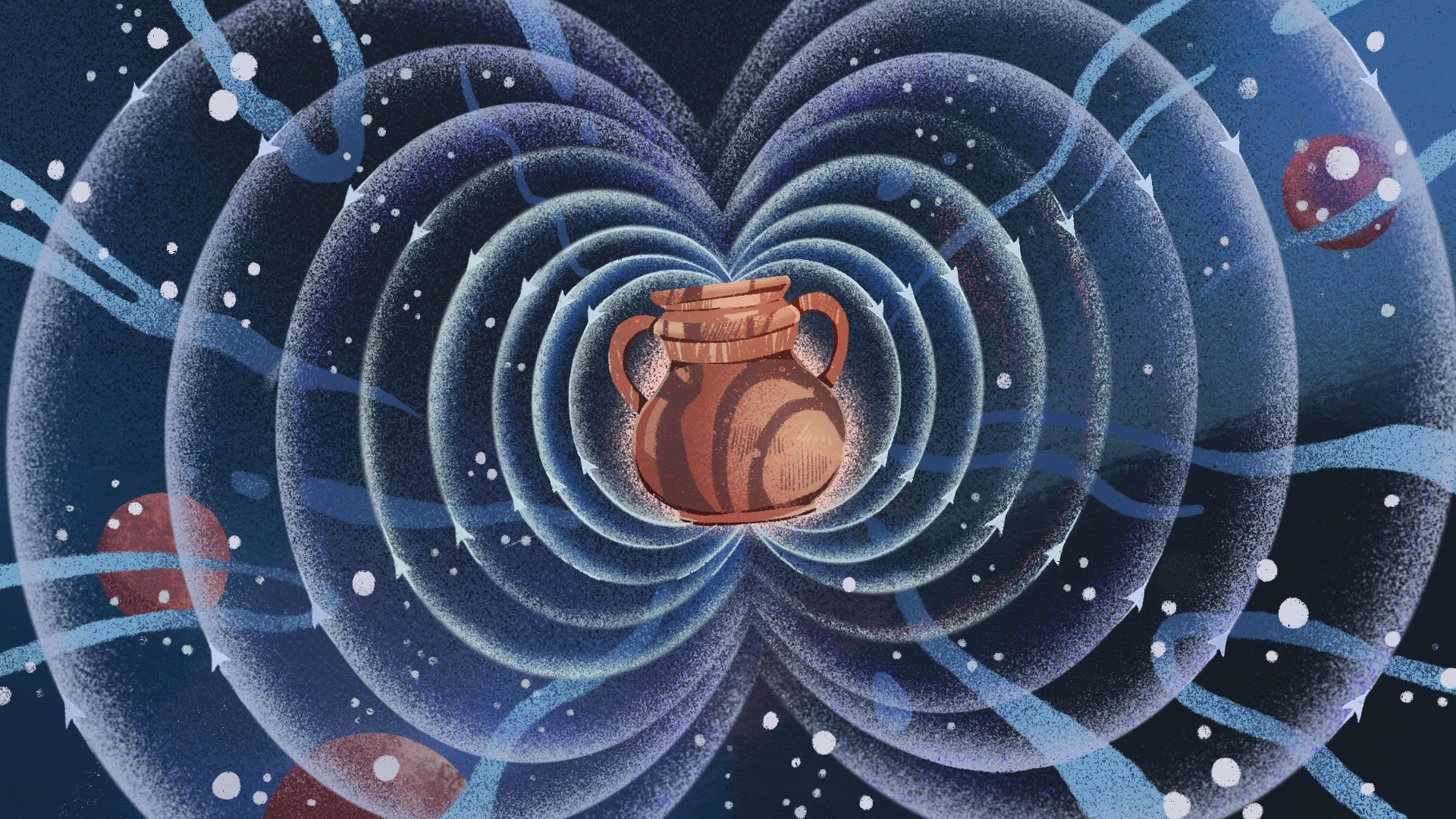
Blooming Desert Photos: Brittlebush Plants Thrive in the Dry Southwest
Desert blooms

Brittlebush (Encelia farinose) is a common plant of the Mohave Desert and Sonoran Desert of the American Southwest, including the warm inland valleys and coastal chaparral of southern and Baja California. With even a small amount of rain, these desert shrubs explode into a colorful display that changes the brown desert landscape into a sea of floral yellow.
A lush landscape?
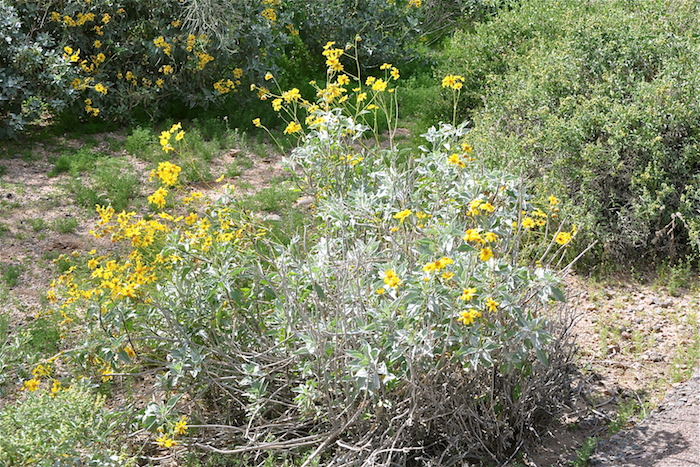
These medium-sized perennial shrubs are a member of the Sunflower family (Asteraceae), and are believed to have a lifespan of around 20 years. Brittlebush has a woody base and takes on a rounded, umbrella shape with its many branches. The silver-green leaves tend to grow toward the ends of the multiple branches.
Tangle of branches
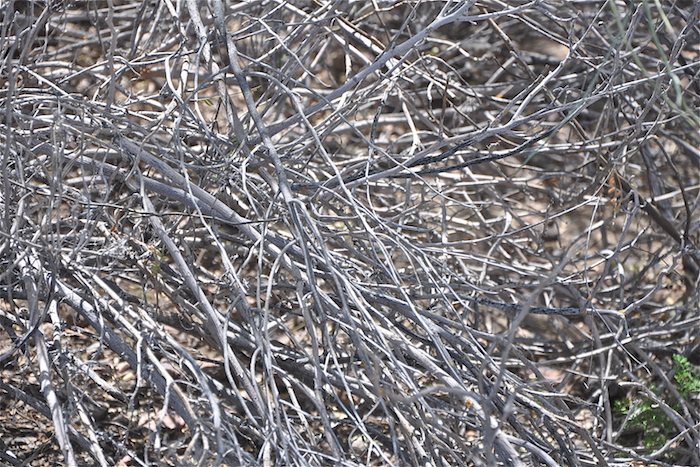
Brittlebush gets its name from the plant’s characteristic behavior during the long, dry seasons of the deserts. Without water, the leaves drop, resulting in a cluster of barren branches that are easily broken, or brittle. The plant has a shallow taproot and numerous lateral roots that wait in the rocky desert soil for the next rainfall, before leafing out once again and producing another burst of yellow flowers.
Hint of green
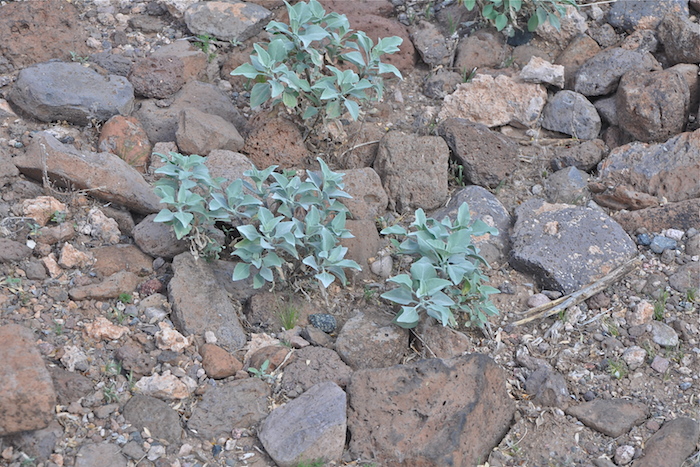
Young brittlebush sprouts once the rains return and typically, multiple bushes grow closely together, competing for the life-sustaining moisture. The young plants prefer a southern exposure and soil that drains well. Germination occurs after 10 days of consistent moisture. Germination is sporadic and some seeds will lie dormant for years before finally sprouting.
Natural protection
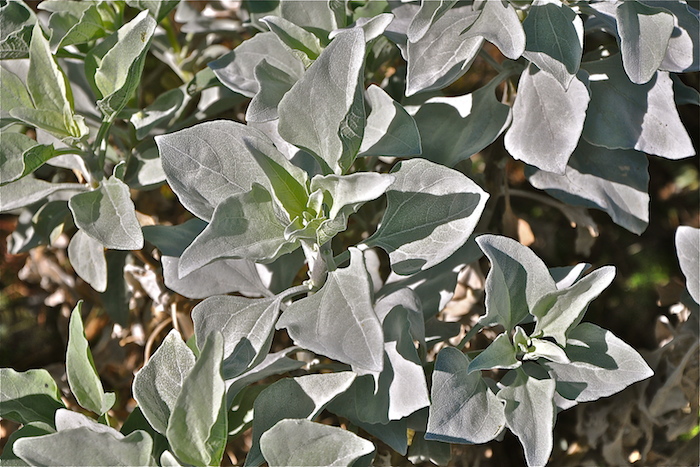
A mature brittlebush produces long, oval shaped and silver-green leaves that are covered with a white mat of short, silky trichomes (hairs). These hair-like structures help protect the leaves from both the heat and the cold. The trichomes’ white color reflects the intense desert sunlight and helps the plant limit the amount of water lost during the process of photosynthesis. They also trap any precious moisture that might be present in the air.
Full bloom
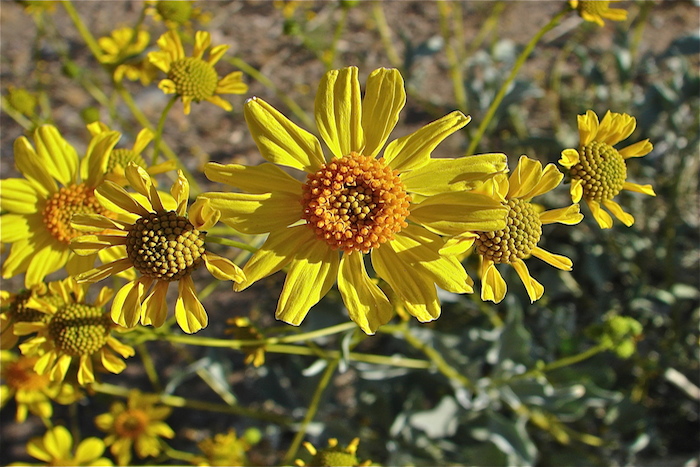
The most common blooming season for brittlebush occurs after the annual winter rains, between the months of March and June. The bright yellow flowers, produced at the tips of the long, barren stems, resemble miniature sunflowers.
Desert illusion

The beautiful disk-shaped flowers rise several inches above the mounded cluster of leaves, giving the illusion of a layer of yellow color floating above the gray-green plant.
Get the world’s most fascinating discoveries delivered straight to your inbox.
Floral close-up
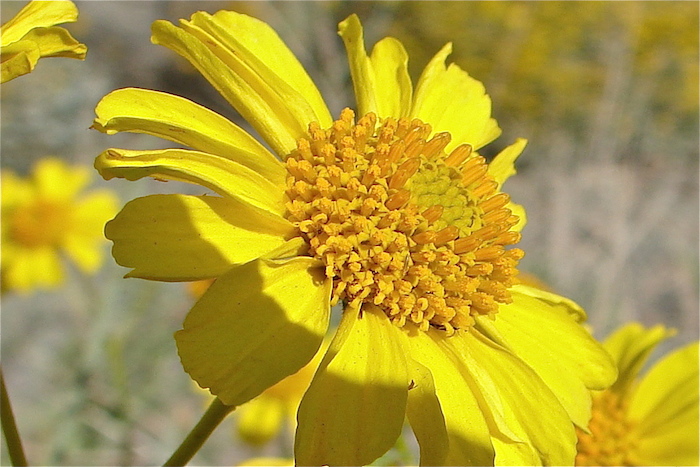
The flower heads of brittlebush are solitary. The disk-corollas vary in color from dark yellow-orange to purplish. The one-inch-long (2.5 centimeters) petals radiate from the head’s central disk, giving the flower its miniature sunflower appearance. A large brittlebush will produce hundreds of these showy, yellow flowers.
Transformation
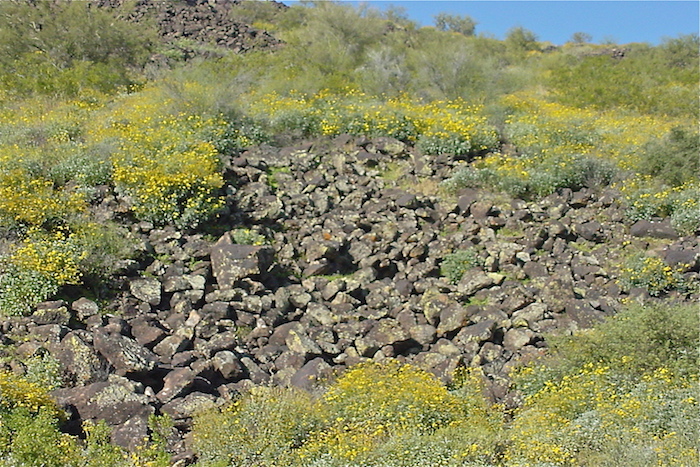
This brown desert hillside of volcanic basalt is literally changed into a sea of yellow when hundreds of brittlebush plants bloom at the same time. Without additional rain, the hillside will regain its brown appearance within six weeks, as the flowers and leaves wither and fall upon the desert and hillside floor.
Pretty plants

During the desert spring, or even after a series of summertime thunderstorms, the common brittlebush becomes an agent of color — just add water and wait for the explosion of yellow. Southwest landscapers often use easy-to-grow brittlebush to add natural color to a desert landscaped home.
Sea of yellow
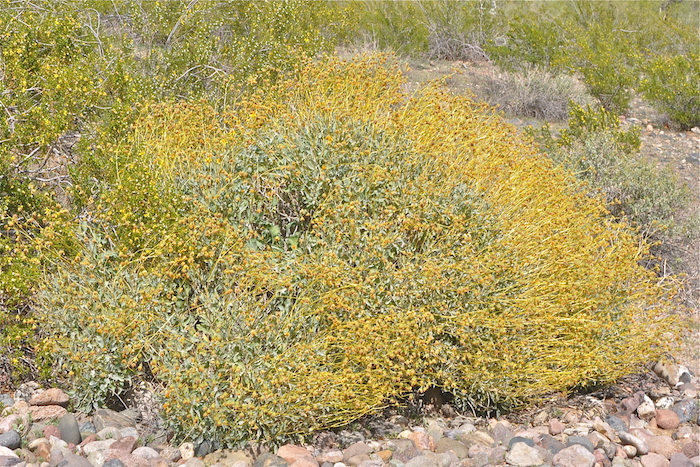
Once the rains stop and the heat of the desert returns, the beautiful yellow flowers quickly begin to fade. Local bees and beetles have pollinated the disk flowers of each bloom and thousands — if not millions — of seeds begin to mature.
